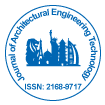Engineering Drawing in Architectural Engineering: A Foundation for Precision and Creativity in Design
*Corresponding Author: Vishal Sharma, Department of Civil and Architectural Engineering, Global Institute of Technology, India, Email: vishalk_sh@gmail.comReceived Date: May 01, 2025 / Accepted Date: May 31, 2025 / Published Date: May 31, 2025
Citation: Vishal S (2025) Engineering Drawing in Architectural Engineering: AFoundation for Precision and Creativity in Design. J Archit Eng Tech 14: 460.
Copyright: © 2025 Vishal S. This is an open-access article distributed under theterms of the Creative Commons Attribution License, which permits unrestricteduse, distribution, and reproduction in any medium, provided the original author andsource are credited
Abstract
Engineering drawing plays a vital role in architectural engineering, acting as the essential language through which ideas, structures, and creative visions are communicated. These drawings are more than visual representations— they are the technical foundations upon which buildings are designed and constructed. This article provides a comprehensive overview of engineering drawing in architectural engineering, discussing its types, importance, standards, tools, and recent technological advancements such as CAD and BIM. By exploring the intersection between technical accuracy and artistic vision, this article underscores the value of mastering drawing skills in producing sustainable, safe, and aesthetically pleasing structures. Engineering drawing serves as the universal language of the architectural engineering profession, where imagination meets precision. In architectural engineering, these drawings are not merely artistic representations but essential technical documents that bridge the gap between design concepts and real-world construction. They convey critical information regarding geometry, dimensions, materials, tolerances, and building systems, allowing engineers, architects, and contractors to collaborate effectively throughout the design and construction lifecycle. It delves into the evolution of drawing practices from traditional hand-drafting to advanced computer-aided design (CAD) and Building Information Modeling (BIM) technologies. The abstract also highlights the significance of standardized conventions, scales, and orthographic projections, which ensure clarity and accuracy in complex building designs. By investigating the educational importance of drawing in architectural curricula and its practical application in the field, this study underlines how mastering engineering drawing is foundational to shaping sustainable, efficient, and aesthetically pleasing built environments. Ultimately, the paper advocates for continued emphasis on engineering drawing skills to support innovation and interdisciplinary collaboration in architectural engineering.

 Spanish
Spanish  Chinese
Chinese  Russian
Russian  German
German  French
French  Japanese
Japanese  Portuguese
Portuguese  Hindi
Hindi 
